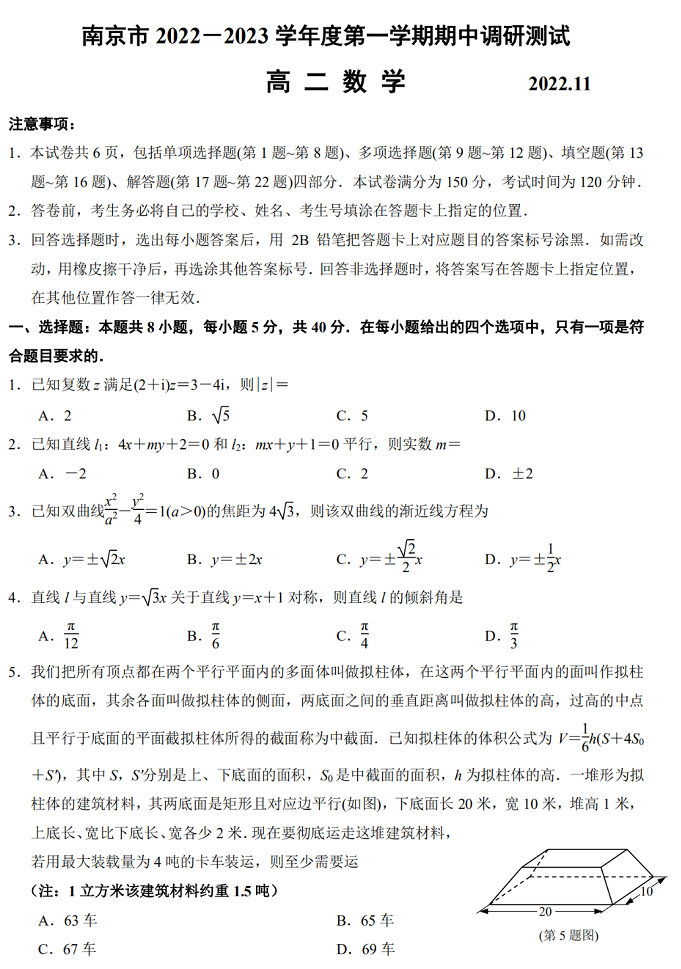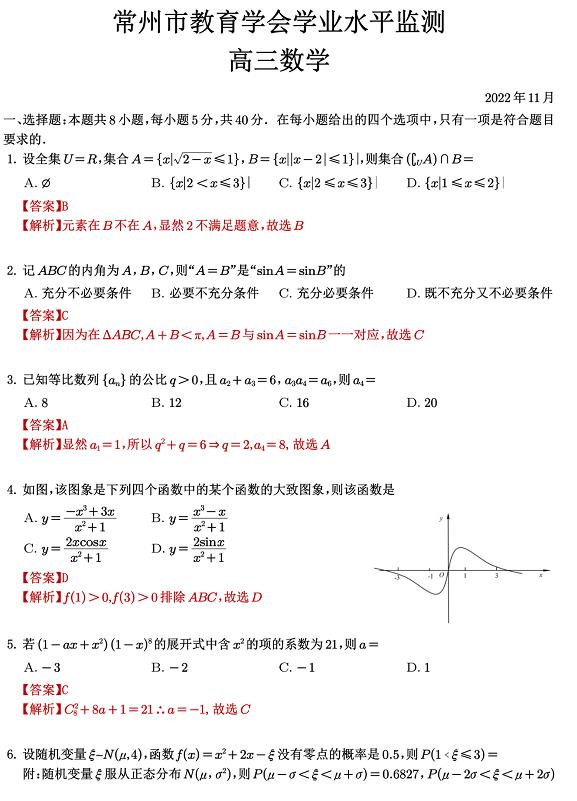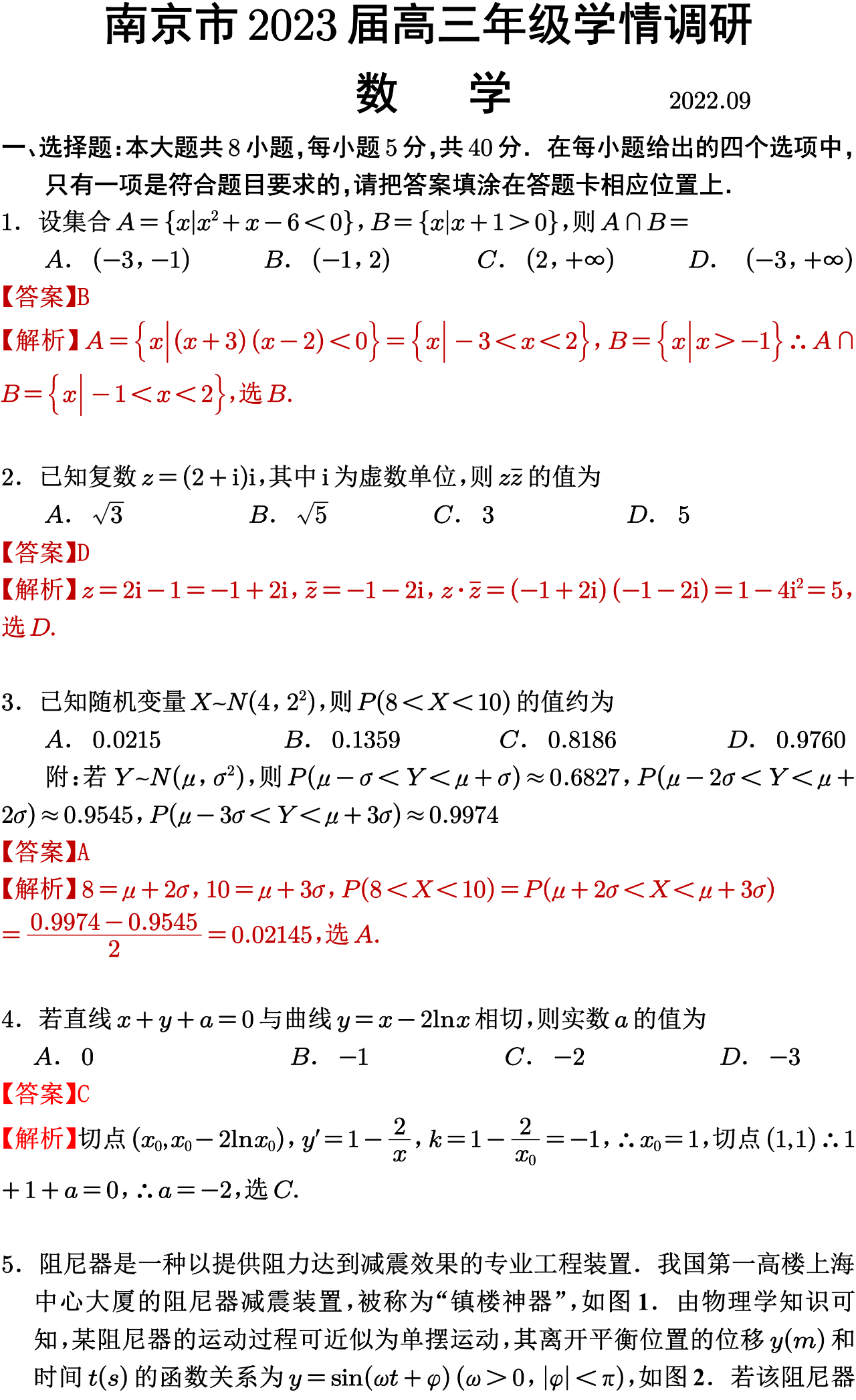佛山二模佛山市2017-2018学年高三年级综合能力测试CAT二英语试题答案
第一部分:听力理解(共两节,30分)
第一节(共5小题;每小题1.5分,共7.5分)
1. C 2. C 3. B 4. A 5. B
第二节(共15小题;每小题1.5分,共22.5分)
6. C 7. A 8. A 9. B 10. C
11. A 12. B 13. C 14. A 15. B
16. C 17. B 18. C 19. B 20. A
第二部分 阅读理解
21. A 22. D 23. A 24. C 25. D
26. C 27. D 28. A 29. B 30. B
31. C 32. B 33. B 34. A 35. B
36. F 37. D 38. B 39. E 40. C
第三部分:知识运用(共两节,45分)
第一节(共20小题;每小题1.5分,30分)
41. B 42. C 43. D 44. A 45. A
46. C 47. D 48. B 49. B 50. D
51. C 52. C 53. A 54. A 55. D
56. B 57. D 58. B 59. C 60. A
第二节(共10小题:每小题1.5分,15分)
61. traditional 62. race 63. is known 64. while 65. eating
66. to make 67. leaves 68. that/which 69. brightly 70. the
第四部分:书面表达(共两节,35分)
第一节(共10小题:每小题1分,10分)
The Great Wall is a great military fortification project in China that is regarded as a miracle in the history of ancient architecture. It went through more ∧ than 2,500 years of the Chinese history and bestrides the vast terrain over a dozen of provinces in northern China. Although it has lost the its military value for a long time, it nevertheless reflects the dignity, confidence, and independence of the Chinese people.
In 1987, UNESCO listed the Great Wall as a World Heritage Site. The Great Wall is a must-visit site for tourists worldwide when they come to China and Beijing. Many of them put on T-shirts with Mao Zedong’s poetry saying “You are not a man until you climbed up the Great Wall” when they happily climb the steps of the Great Wall. The experience becomes unforgettable.
第二节(25分)参考高考评分标准进行阅卷
Possible version:
Paper cut is one of the most popular Chinese decorative folk arts. Traditional paper cut is also called “window blossoms” because they were first put on windows for decoration. Other forms of paper cut are developed from the “window blossoms”. There are different styles of paper cut in different parts of China. The paper was carved using a carving knife instead of using scissors. In the windows, the bright colors combined with light to form lovely patterns and shadows. Before the copying machine was invented, the paper cut artists copied their carving mold using this technique. The paper cuts have walked out from the domestic decoration to modern interior design. The art form is reflected on trade marks, advertisements, interior decoration, fashion design, book binding, stamp design and cartoon books. The theme is not limited to traditional Chinese life, but encompasses different cultural artifacts.
- 热门课程
- 热门资讯
- 热门资料
- 热门福利
-
 攻略来喽!中考志愿如何填报?中考的重要性不用说大家都了解,那不光它的成绩重要,关于志愿填报也是很重要的。很多学生在中考完后,没有填好志愿,导致发生高分低录,甚至是滑档的情况出现。为避免这样的情况发生造成遗憾,那小编就给大家来分享一下,中考志愿填报对的规则,希望对大家有一定的帮助作用。 中考志愿如何填报? (1)提前了解
攻略来喽!中考志愿如何填报?中考的重要性不用说大家都了解,那不光它的成绩重要,关于志愿填报也是很重要的。很多学生在中考完后,没有填好志愿,导致发生高分低录,甚至是滑档的情况出现。为避免这样的情况发生造成遗憾,那小编就给大家来分享一下,中考志愿填报对的规则,希望对大家有一定的帮助作用。 中考志愿如何填报? (1)提前了解 -
 一对一补课有啥优势?哪家一对一补课机构好?随着教育竞争压力的加大,更多人倾向于选择一对一补课这种方式来帮助孩子提升成绩。那一对一补课有啥优势呢?这是很多想选择此补课方式的人想了解的内容。而且在这么大的教育市场上,选择哪家一对一补课机构也成为了难题。本文将就这两个问题,跟大家做出详细的介绍,希望对大家有帮助。 一对一补课有啥优势? 一
一对一补课有啥优势?哪家一对一补课机构好?随着教育竞争压力的加大,更多人倾向于选择一对一补课这种方式来帮助孩子提升成绩。那一对一补课有啥优势呢?这是很多想选择此补课方式的人想了解的内容。而且在这么大的教育市场上,选择哪家一对一补课机构也成为了难题。本文将就这两个问题,跟大家做出详细的介绍,希望对大家有帮助。 一对一补课有啥优势? 一 -
 想提高英语成绩,选择江苏秦学教育一对一补课行吗?英语这个重要的科目想要提高分数是一点儿都不简单,不仅仅要从知识要点入手,还要练习听和说的能力,所以很多学生和家长都选择用补课的方式来提升。那在那么多的补课机构里,选择江苏秦学教育一对一课程行吗?本文将跟大家来讨论一下这个问题,希望对大家的选择有帮助。 江苏秦学教育一对一课程在帮学生提高英语成绩
想提高英语成绩,选择江苏秦学教育一对一补课行吗?英语这个重要的科目想要提高分数是一点儿都不简单,不仅仅要从知识要点入手,还要练习听和说的能力,所以很多学生和家长都选择用补课的方式来提升。那在那么多的补课机构里,选择江苏秦学教育一对一课程行吗?本文将跟大家来讨论一下这个问题,希望对大家的选择有帮助。 江苏秦学教育一对一课程在帮学生提高英语成绩 -
 高考复读有啥劣势?哪些人适合复读?高考失利的人想通过复读来再给自己一次机会,重新冲刺理想的目标。但是随着新高考的实行,高考复读的不确定性越来越多,在考虑到复读能带来的机会的时候,也要考虑一下高考复读有啥劣势,只有全方位的考虑清楚,才能知道自己是否该选择复读这条路。而且也不是所有的人都适合复读,小编也跟大家来聊一聊,哪些人是适合复
高考复读有啥劣势?哪些人适合复读?高考失利的人想通过复读来再给自己一次机会,重新冲刺理想的目标。但是随着新高考的实行,高考复读的不确定性越来越多,在考虑到复读能带来的机会的时候,也要考虑一下高考复读有啥劣势,只有全方位的考虑清楚,才能知道自己是否该选择复读这条路。而且也不是所有的人都适合复读,小编也跟大家来聊一聊,哪些人是适合复
-
 南京市2022-2023年高二上学期期中考试数学试卷含答案南京市高二学生进行了2022-2023年第一学期中考试,小编整理到了这次考试的数学试卷及答案,在这篇文章里面分享给同学们。咱们高二学生或者是江苏其他城市的高二学生们也可以看一看、做一做,对自己的知识进行一个复习,对自己做一个检测。 南京市2022-2023年高二上学期期中考试数学试卷
南京市2022-2023年高二上学期期中考试数学试卷含答案南京市高二学生进行了2022-2023年第一学期中考试,小编整理到了这次考试的数学试卷及答案,在这篇文章里面分享给同学们。咱们高二学生或者是江苏其他城市的高二学生们也可以看一看、做一做,对自己的知识进行一个复习,对自己做一个检测。 南京市2022-2023年高二上学期期中考试数学试卷 -
 江苏省连云港市2022-2023年上学期高三期中考试数学试卷及答案近日江苏的很多城市的高三学校都进行了2022-2023年上学期期中考试,主要是对高三学生从开学到现在这么长时间学习情况的一个调查。下面是江苏省连云港市2022-2023年上学期高三期中考试数学试卷及答案,伊顿教育小编整理出来跟大家进行分享。 江苏省连云港市2022-2023年上学期高三
江苏省连云港市2022-2023年上学期高三期中考试数学试卷及答案近日江苏的很多城市的高三学校都进行了2022-2023年上学期期中考试,主要是对高三学生从开学到现在这么长时间学习情况的一个调查。下面是江苏省连云港市2022-2023年上学期高三期中考试数学试卷及答案,伊顿教育小编整理出来跟大家进行分享。 江苏省连云港市2022-2023年上学期高三 -
 常州市2023届高三期中联考数学试卷及答案解析近期江苏省一些城市的高三学生们已经开始了期中考试,下面是小编整理的常州市2023届高三期中联考数学试卷及答案解析,虽然考试已经考完了,但是你们还是可以看再看一下的。另外咱们江苏其他城市的高三学生们也可以做一下常州市今年高三期中联考的数学试卷,看看自己得多少分。 常州市2023届高三期中
常州市2023届高三期中联考数学试卷及答案解析近期江苏省一些城市的高三学生们已经开始了期中考试,下面是小编整理的常州市2023届高三期中联考数学试卷及答案解析,虽然考试已经考完了,但是你们还是可以看再看一下的。另外咱们江苏其他城市的高三学生们也可以做一下常州市今年高三期中联考的数学试卷,看看自己得多少分。 常州市2023届高三期中 -
 2023南京高三零模 南京市2023届高三零模数学试卷及答案解析随着高三开学,南京市迎来了高三零模考试,正式进入高三的模考,这次零模考试不知道广大高三学子们考的怎么样呢?以下是小编为大家整理的2023届南京市高三零模考试的数学试卷及答案解析,欢迎大家来查漏补缺。 2023南京高三零模 南京市2023届高三零模数学试卷及答案解析
2023南京高三零模 南京市2023届高三零模数学试卷及答案解析随着高三开学,南京市迎来了高三零模考试,正式进入高三的模考,这次零模考试不知道广大高三学子们考的怎么样呢?以下是小编为大家整理的2023届南京市高三零模考试的数学试卷及答案解析,欢迎大家来查漏补缺。 2023南京高三零模 南京市2023届高三零模数学试卷及答案解析




















 All right reserved
All right reserved
